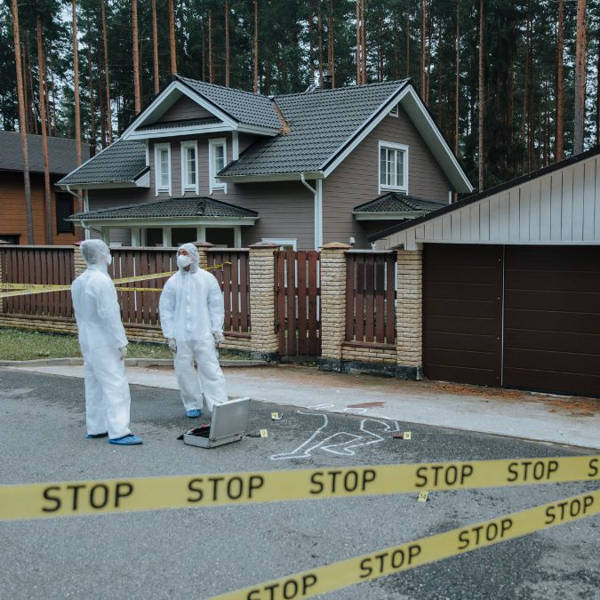
Explore their stories, the danger they posed, and why these cases still fascinate—and warn us—today.
Why We Can’t Look Away
True crime has a magnetic pull. We’re drawn to the darkest corners of human behavior, trying to understand how ordinary people can commit extraordinary horrors. This article doesn’t glorify these crimes—it informs, contextualizes, and honors the victims.
Here, we explore the ten most notorious serial killers in history—those whose stories have shaken the world, altered law enforcement practices, and continue provoking deep reflection.
1. Luis Garavito “La Bestia” (Colombia)
- Who? Luis Alfredo Garavito Cubillos, known as La Bestia (The Beast).
- Crimes: Between 1992 and 1999, he murdered and raped mostly minors in western Colombia. Confirmed victims: 193; he confessed to as many as 221.
- Legacy: One of the most prolific child predators in history. Sentenced to thousands of years in prison; his lifespan sentence became symbolic, representing justice though never fully enforceable.
2. Samuel Little (USA)
- Who? Samuel Little, a prolific American serial killer.
- Crimes: Convicted of eight murders, but he confessed to 93. FBI confirmed at least 60 victims across the U.S., making him the most prolific in U.S. history.
- Why it matters: His late confession helped close cold cases dating back decades, giving families long-overdue closure.
3. Pedro Alonso López “Monster of the Andes” (Colombia/Ecuador/Peru)
- Crimes: Between 1969 and 1980, López killed at least 110 girls—and claimed up to 300+.
- Outcome: Convicted in Ecuador, later released, and ultimately disappeared in 1999—adding to the horror of his legacy.
4. Mikhail Popkov “The Werewolf” (Russia)
- Who? A former Russian police officer turned serial killer.
- Crimes: Between 1992 and 2011, murdered at least 83 women, many found on Wednesdays—earning him the nickname “the Wednesday Murderer.”
- Impact: His dual role as law enforcer and killer exposed systemic failures in Russian policing.
5. Kampatimar Shankariya (India)
- Who? Known as Kanpatimar, active in Rajasthan during 1977–1978.
- Crimes: Confessed to murdering 70 people using a hammer. His spree was cut short by arrest and execution in 1979.
- Significance: A rare example of an Indian serial killer whose case shocked the region with its brutal simplicity and scale.
6. Jack the Ripper (UK)
- Who? An unidentified killer terrorizing London’s Whitechapel in 1888.
- Crimes: Murdered five (possibly more) women, mutilated their bodies, and taunted police with letters.
- Cultural impact: Defined public fear of unseen threats and fueled the concept of the “serial killer” in collective imagination.
7. Jeffrey Dahmer (USA)
- Who? Known as the “Milwaukee Cannibal”.
- Crimes: From 1978 to 1991, murdered 17 men, committed necrophilia, and cannibalized some victims.
- Why we study him: His pathology—obsession with control and collecting body parts as trophies—remains a case study in criminal psychology.
8. Modern Predators on Dating Apps
Not all serial killers fit historical patterns; a worrying trend has emerged in the digital age. Predators use dating apps to lure victims. Notable cases include killers who exploited Tinder, Grindr, and similar platforms.
- Concern: Minimal verification allows offenders to rejoin platforms, prompting calls for stronger safety measures.
9. Edmund Kemper “The Co‑ed Killer” (USA)
- Who? Known for his towering stature and horrific crimes.
- Crimes: Between 1972–1973, murdered eight people, including college students, his mother, and her friend. Notorious for necrophilia and posing with bodies.
- Aftermath: Denied parole repeatedly; remains incarcerated due to high risk of reoffending.
10. Fred and Rose West (UK)
- Who? Fred and Rose West, British killers operating in the late 1970s.
- Survivor story: Some, like Kathleen Richards, escaped and later testified. Her story highlights abuse, manipulation, and resilience.
- Why include it? Emphasizes survivor voices—bringing humanity, healing, and justice into the narrative.
Why These Cases Matter
| Lesson | Insight |
|---|---|
| Victim Advocacy | Each statistic represents a real person, family, and community. |
| Criminal Patterns | Many killers share hallmarks such as body mutilation, necrophilia, or taunting law enforcement. |
| Institutional Failures | Cases like Popkov, López, and Garavito show how system gaps can enable prolonged criminal activity. |
| Forensics & Media | From Jack the Ripper’s letters to modern DNA tracing, technology and reporting shape investigations. |
| Digital Safety | Dating app predators highlight the need for stronger verification and accountability. |
| Survivor Strength | Stories of survivors provide hope and emphasize resilience amid horror. |
Final Thoughts
Writing about serial killers is not about sensationalism—they are historical tragedies, human failures, and cautionary tales.
By understanding these dark episodes, we reflect on humanity, improve protective systems, and honor those impacted.
Sources
- Britannica – “7 of History’s Most Notorious Serial Killers”
- Wikipedia – Luis Garavito, Samuel Little, Pedro López, Mikhail Popkov, Kampatimar Shankariya
- The Sun – Dating app killer trends
- People – Edmund Kemper news
- The Guardian – Survivor from Fred & Rose West

